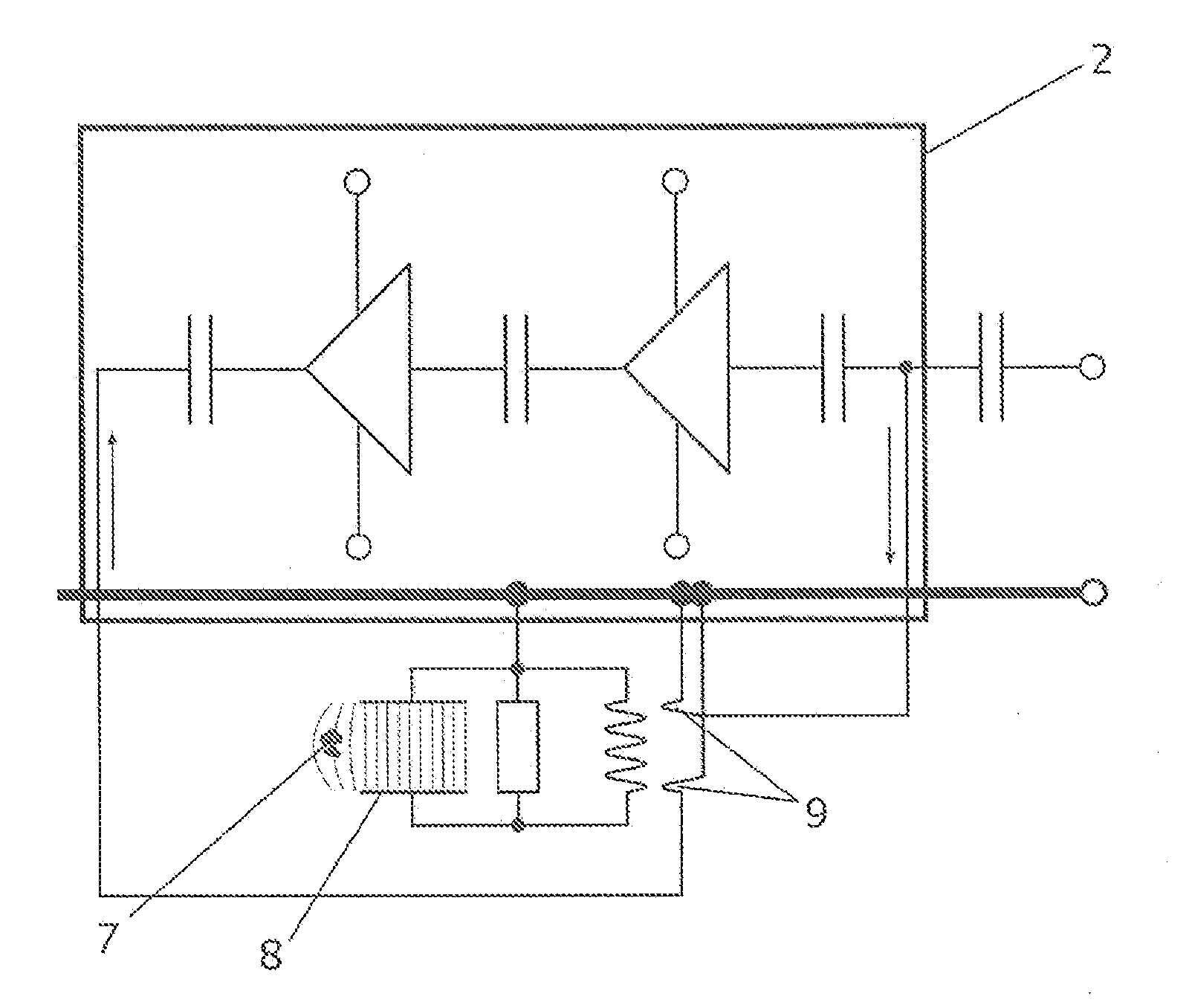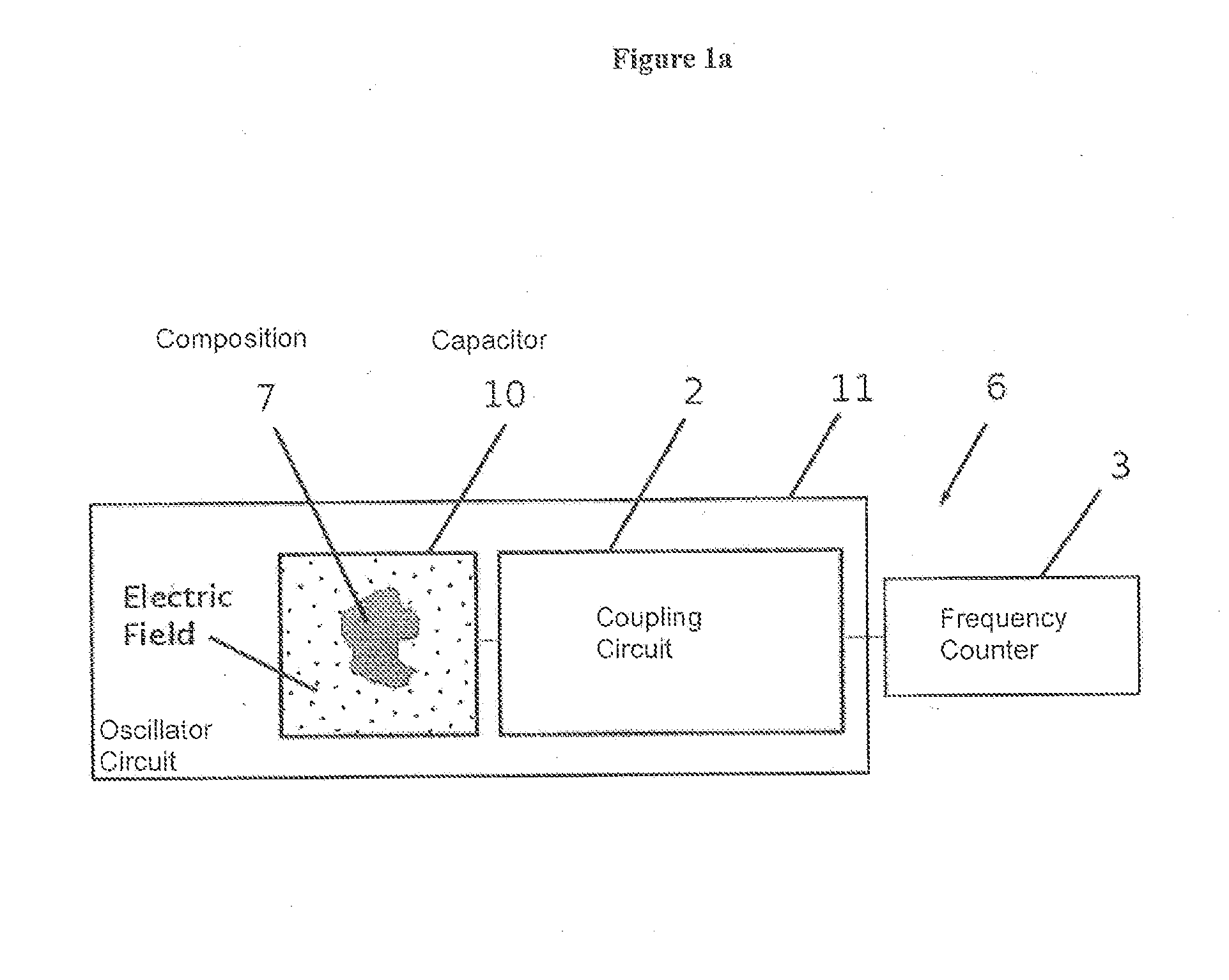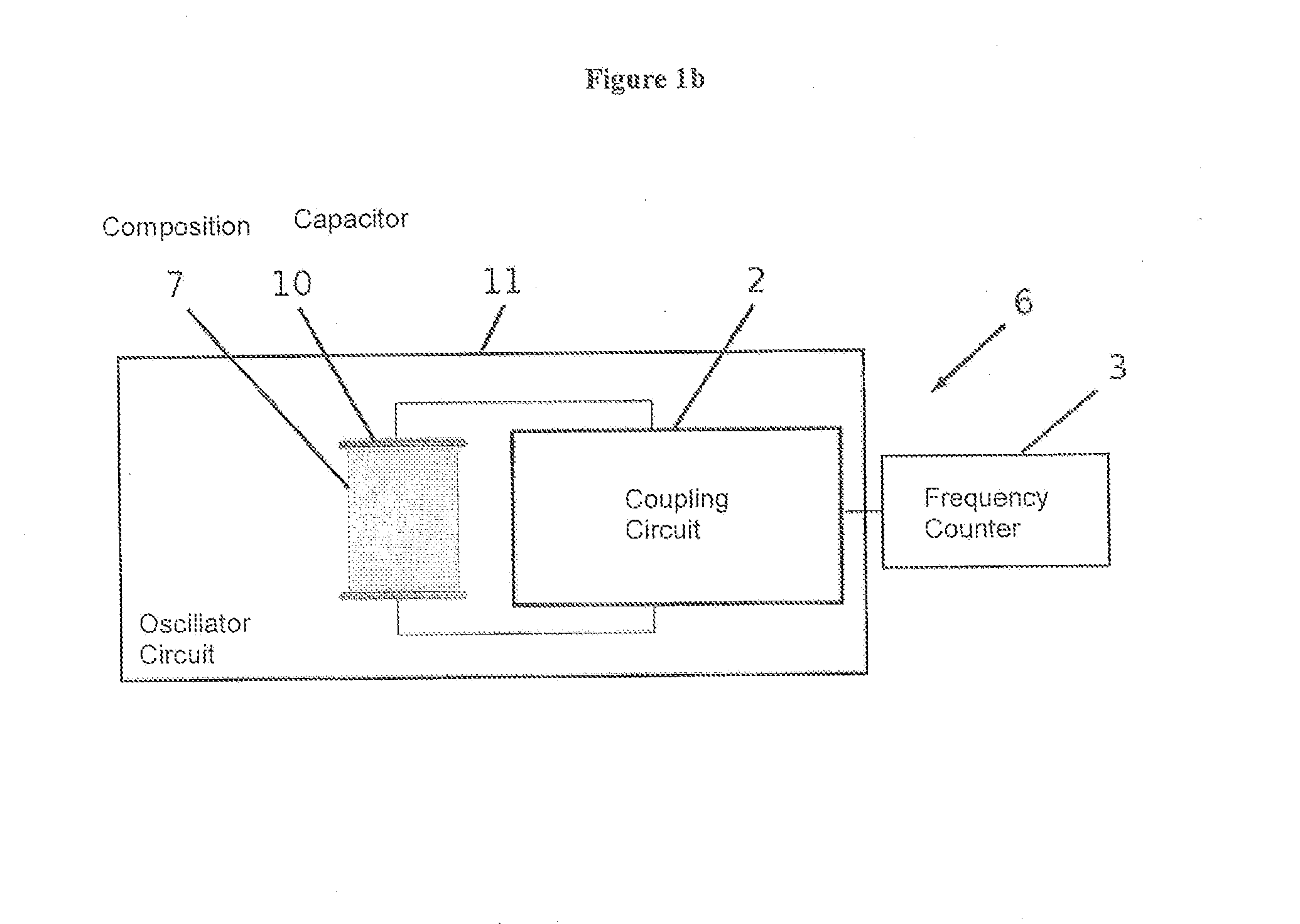Non-invasive measurement of dielectric properties of a substance
a dielectric property and non-invasive technology, applied in the direction of material analysis, material testing goods, instruments, etc., can solve the problems of disadvantageous systems and devices
- Summary
- Abstract
- Description
- Claims
- Application Information
AI Technical Summary
Benefits of technology
Problems solved by technology
Method used
Image
Examples
examples
[0112]This non-invasive method of measuring material characteristics via frequency shifts as described herein has been applied to solve questions from different fields:
[0113]If, for instance, the influence of electric conductivity of ions in solution has to be measured, the term σ / 2π∈0f=αn / f can be made prevailing all other contributions for a reliable evaluation of the particle density n. Here, the frequency f in the denominator can be made sufficiently small to measure this contribution directly, i.e. approx 100 kHz. Such measurements rely on a multivibrator scheme as oscillation circuit.
[0114]Similar questions concerning the response of ions in solution can be answered by the use of the following physical principle: Water molecules from the compartment of ‘free’ water are trapped in the hydration shells of the ions with co-ordination numbers 8 to 12 (e.g., Na+, Cl− in H2O). These molecules in the ‘loosely bound’ phase have a mobility frequency f21 of the free water molecules. If ...
PUM
 Login to View More
Login to View More Abstract
Description
Claims
Application Information
 Login to View More
Login to View More - R&D
- Intellectual Property
- Life Sciences
- Materials
- Tech Scout
- Unparalleled Data Quality
- Higher Quality Content
- 60% Fewer Hallucinations
Browse by: Latest US Patents, China's latest patents, Technical Efficacy Thesaurus, Application Domain, Technology Topic, Popular Technical Reports.
© 2025 PatSnap. All rights reserved.Legal|Privacy policy|Modern Slavery Act Transparency Statement|Sitemap|About US| Contact US: help@patsnap.com



